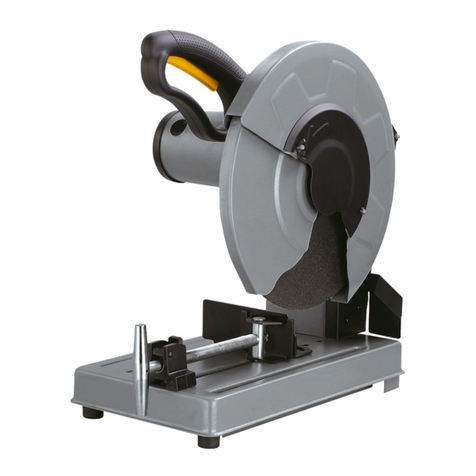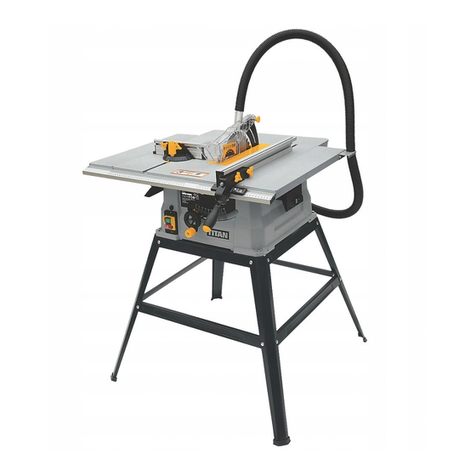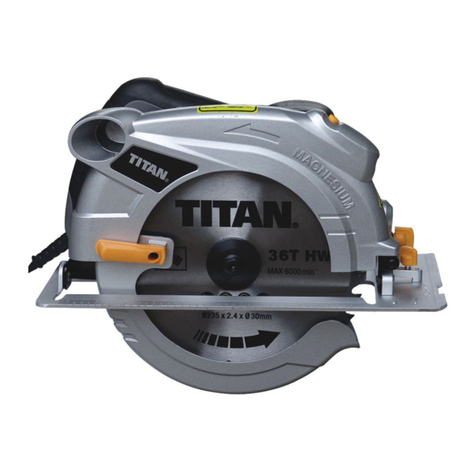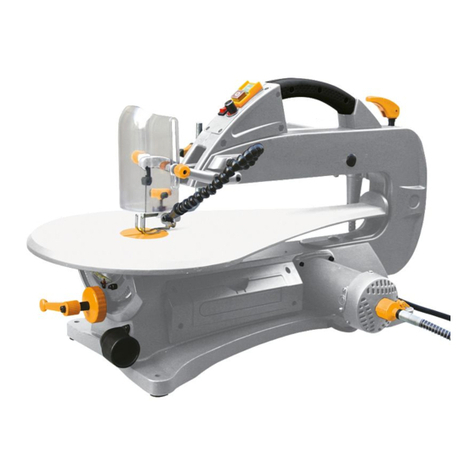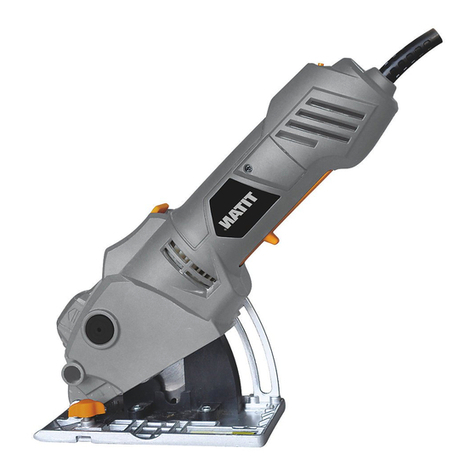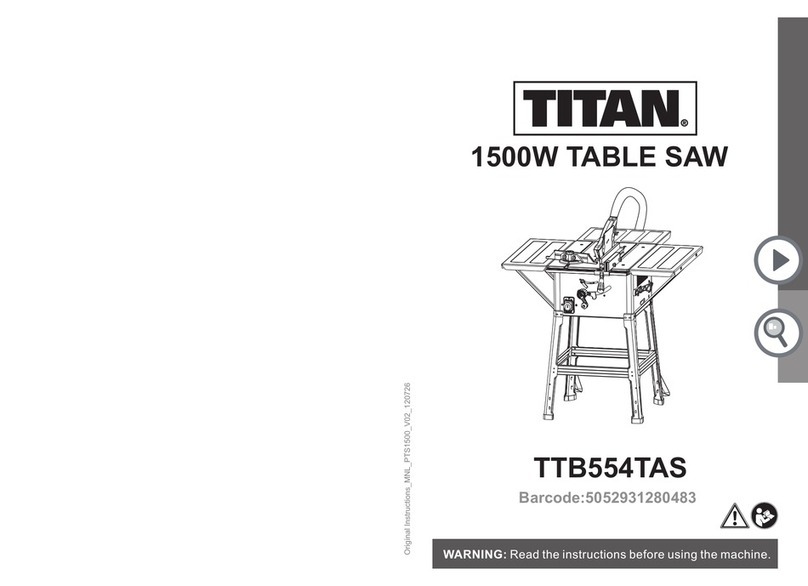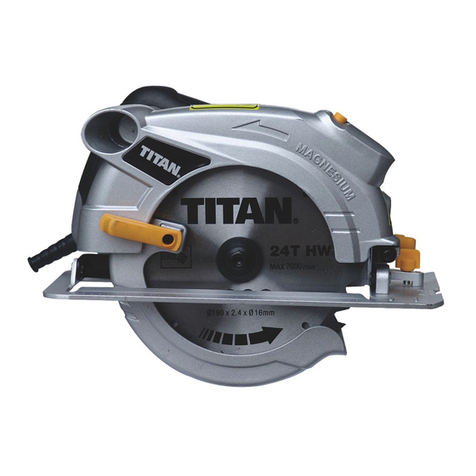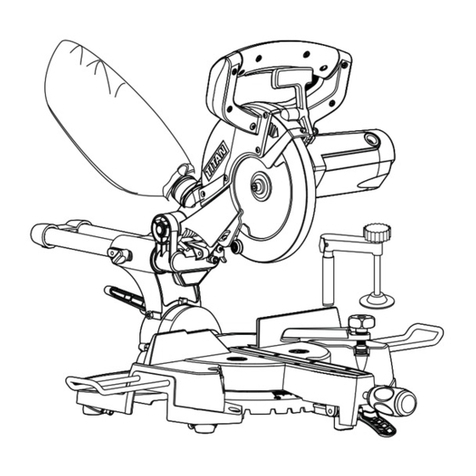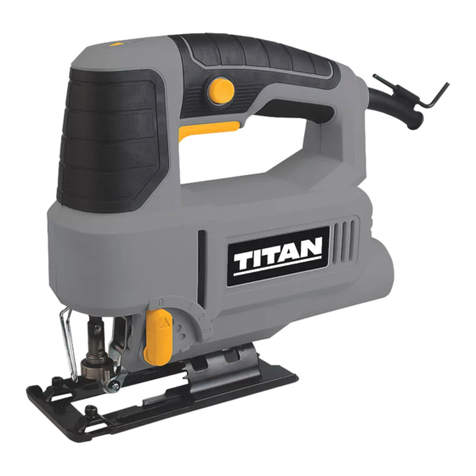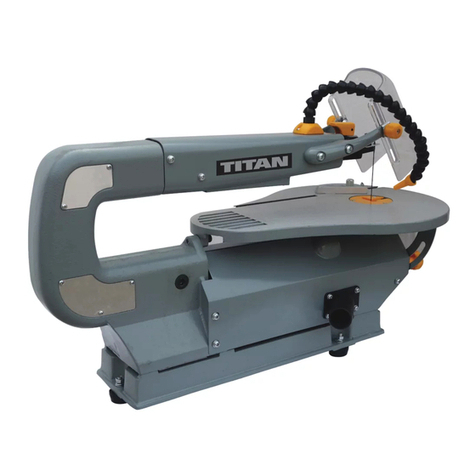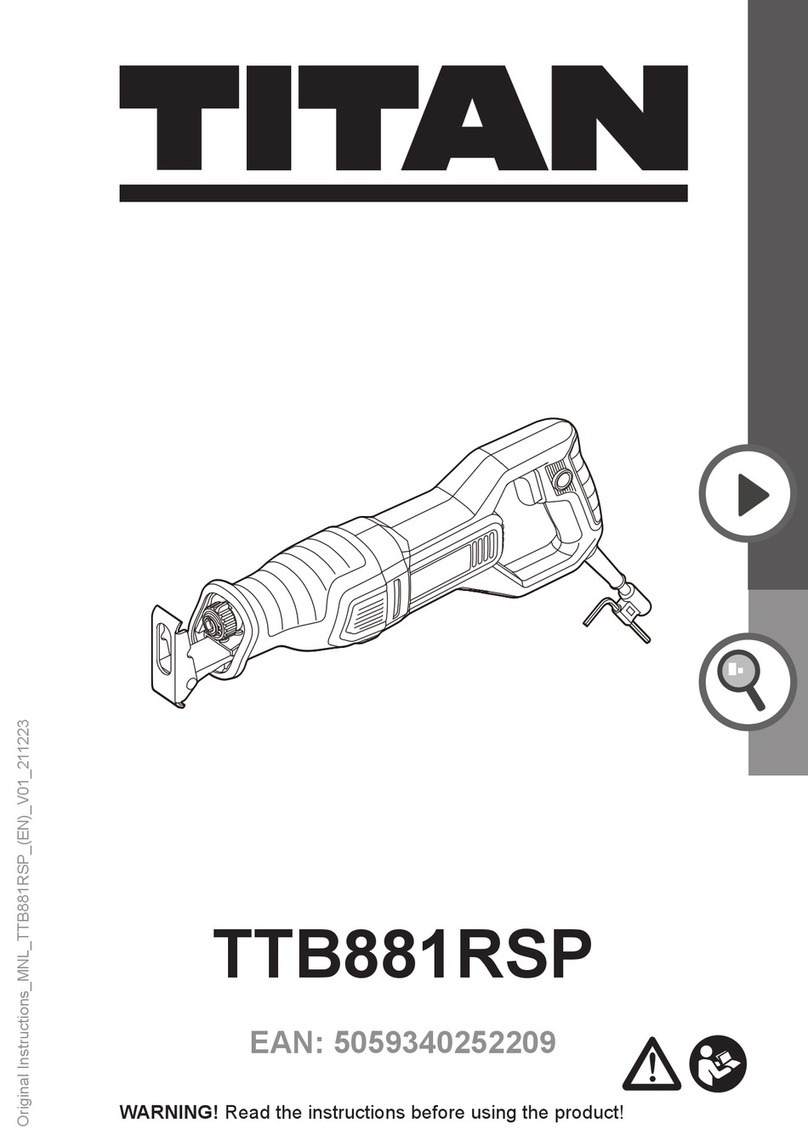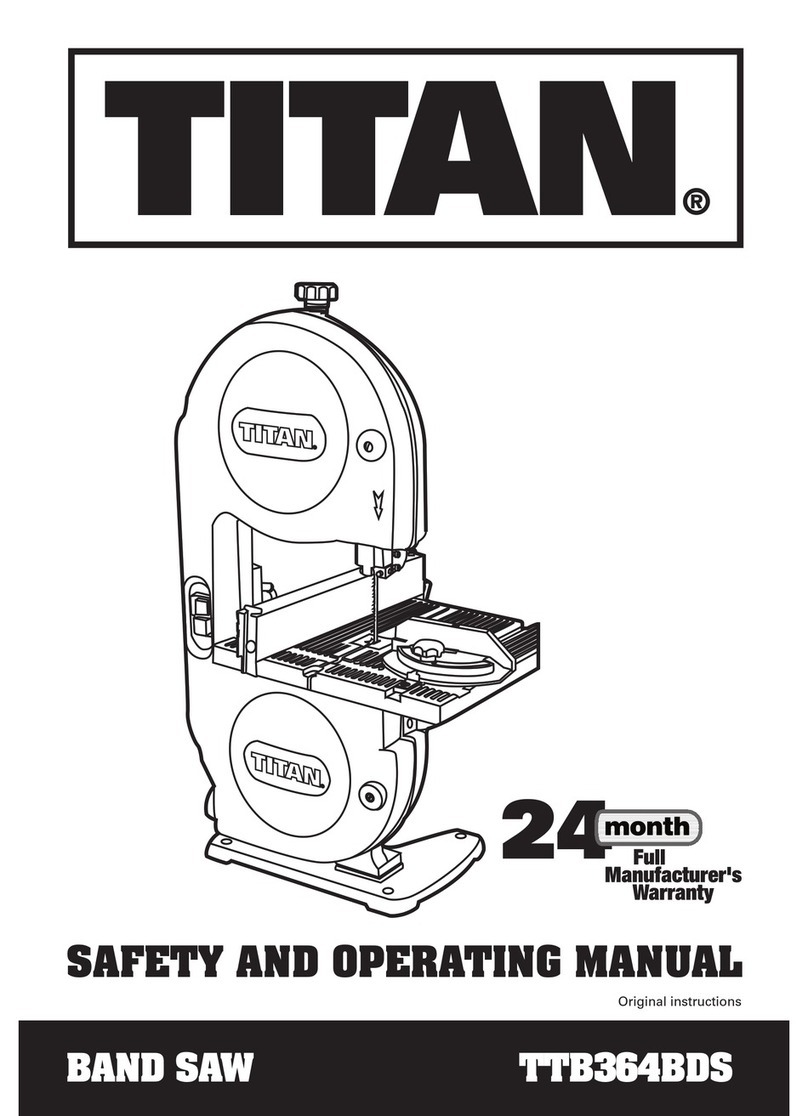AddITIONAl SAFETY INSTRUCTIONS FOR YOUR SlIdING
MITRE SAw wITh lASER.
1. Only wood or products such as medium density fibre board can be cut with this
saw. Other materials may shatter or cause the blade to grab.
2. Never fit substandard blades to the saw. Only fit correctly sized saw blade.
3. Let the blade reach full speed before commencing the cut.
4. Do not use damaged or worn blades.
5. Ensure that the directional arrow marked on the blade corresponds with the
rotational direction of motor.
6. Ensure that the movable guards operate freely without jamming.
7. Never cut pieces too small to be held securely against the straight guide leave
enough space for the hand to be a safe distance from the blade.
8. Regularly check the blade securing bolt.
9. Do not run the machine with any part of the casing missing or damaged.
10. Do not start the saw when the blade is inserted into the workpiece.
11. Let the blade come to a complete stop before removing any jammed or offcut
material from around the blade area.
Do not attempt to stop the blade by placing sideways pressure on the blade disc.
12. Before cutting let the saw blade run freely for a few seconds. If it makes an unfamiliar
sound or vibration switch it off immediately and disconnect from the power supply.
Investigate cause or consult your dealer.
13. Ensure all securing clamps are tight and check for excessive play.
14. Never try to cut freehand. Always ensure that the workpiece is securely pressed
against the straight guide and table support surface.
15. Disconnect from the mains supply, pull down the handle of the saw. With the
blade in its furthest down position, rotate the blade by hand to ensure it is free from
obstruction. Repeat this procedure at all maximum mitre and bevel positions before
commencing work.
16. Ensure that the workpiece to be cut off has sufficient room to move sideways.
Failure to do so may result in the off cut binding against the blade.
17. Ensure that irregular or round piece to be cut off has sufficient room to move or
twist so that they cannot pinch the blade.
18. Do not forget to remove any adjustment keys, spanners and wrenches before
switching on the tool.
19. When the machine is in operation, keep hands away form the cutting area.
20. Always ensure the safety guard is in working order before use. Should the guard
not close quickly over the saw blade, do not use.
21. Do not tie or wedge open the safety guard.
22. Only use blades with the correct bore size for the spindle.
23. Do not use saw blade which does not comply with the characteristics specified in
these instructions.
24. Do not use saw blades made of high speed steel.
25. Do not cut into screws or nails. Inspect workpiece for nails and screws before use.
26. Keep the power cord well away from the cutting area during use. Always position
the cord so that it will not be caught in the workpiece when the saw is in use.
